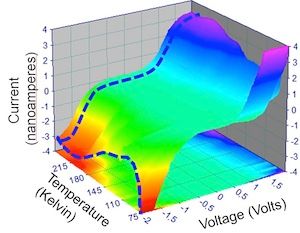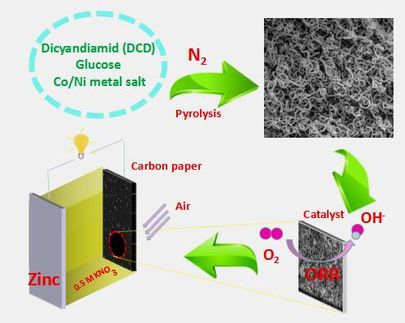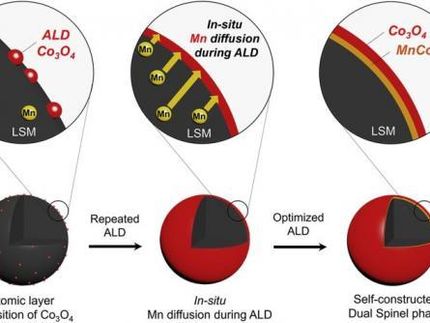Beyond surface of oxide films
Better batteries, catalysts, electronic information storage and processing devices are among potential benefits of an unexpected discovery made by Oak Ridge National Laboratory scientists using samples isolated from the atmosphere.

This figure shows the spectroscopic measurement (current as a function of voltage) and this as a function of temperature. (Reproduced by permission of The Royal Society of Chemistry)
hi-res image
Researchers at the Department of Energy lab learned that key surface properties of complex oxide films are unaffected by reduced levels of oxygen during fabrication — an unanticipated finding with possible implications for the design of functional complex oxides used in a variety of consumer products, said Zheng Gai, a member of DOE’s Center for Nanoscale Materials Sciences at ORNL.
The findings are detailed in a paper published in Nanoscale.
While the properties of the manganite material below the surface change as expected with the removal of oxygen, becoming an insulator rather than a metal, or conductor, researchers found that the sample showed remarkably stable electronic properties at the surface. Gai emphasized that the robustness of a surface matters because it is precisely the surface properties that determine, influence and affect the functionality of complex oxides in catalysis and batteries.
“With these materials being a promising alternative to silicon or graphene in electronic devices, the ever-decreasing size of such components makes their surface properties increasingly important to understand and control,” Gai said.
While this work provides a fundamental understanding of a material used and researched for catalysts, oxide electronics and batteries, Gai and lead author Paul Snijders noted that it’s difficult to speculate about possible impacts.
“I always say that in basic science we are discovering the alphabet,” said Snijders, a member of ORNL's Materials Science and Technology Division. “How these letters will be designed into a useful technological book is hard to predict.”
Making this discovery possible was the fact the authors did their experiment using scanning probe microscopy in a vacuum system with no exposure of the samples to the atmosphere. This contrasts with the conventional approach of growing a sample and then installing it in analysis equipment. During such a transfer, scientists expose the material to the water, nitrogen and carbon dioxide in the air.
By studying pristine samples, the ORNL team gained a surprising new understanding of the physics of the material surfaces — an understanding that is necessary to design new functional applications, Snijders said.
Other news from the department science
Most read news
More news from our other portals
See the theme worlds for related content
Topic World Battery Technology
The topic world Battery Technology combines relevant knowledge in a unique way. Here you will find everything about suppliers and their products, webinars, white papers, catalogs and brochures.

Topic World Battery Technology
The topic world Battery Technology combines relevant knowledge in a unique way. Here you will find everything about suppliers and their products, webinars, white papers, catalogs and brochures.





























































